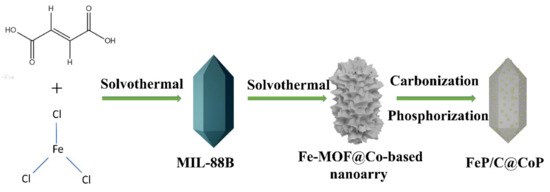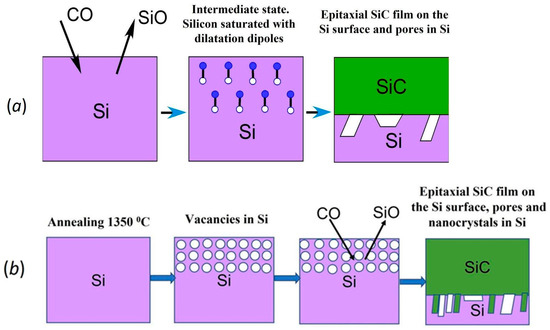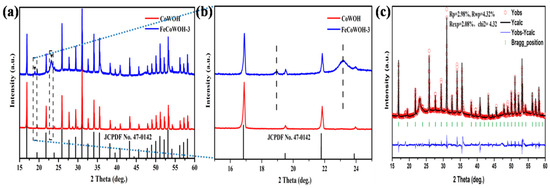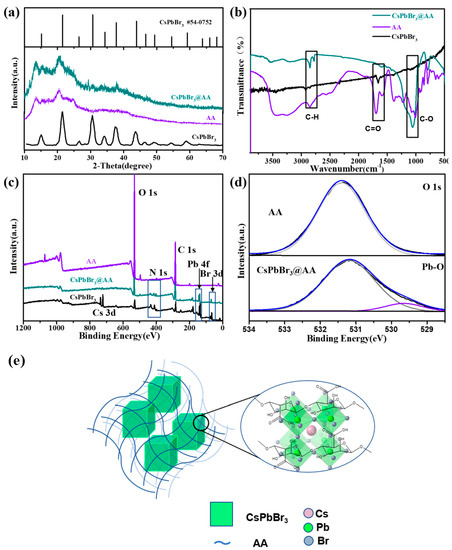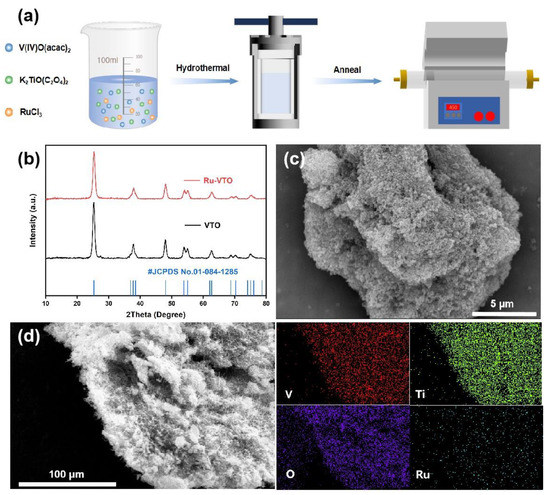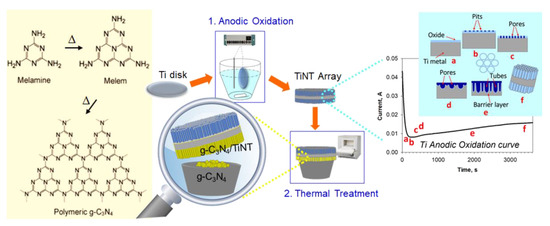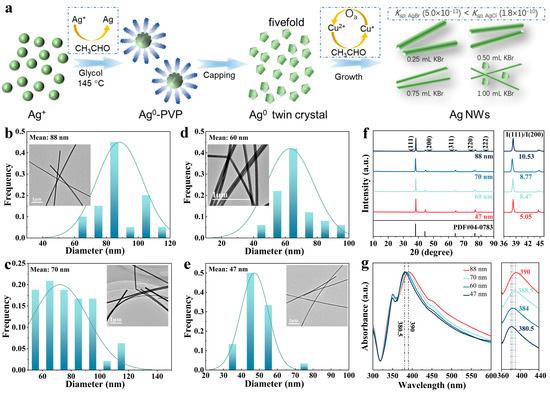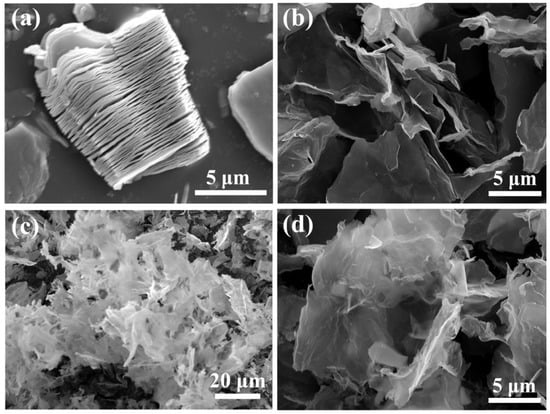Feature Papers of Coatings for Energy Applications
Share This Topical Collection
Editor
 Dr. Emerson Coy
Dr. Emerson Coy
 Dr. Emerson Coy
Dr. Emerson Coy
E-Mail
Website
Collection Editor
NanoBioMedical Centre, Adam Mickiewicz University in Poznań, ul. Wszechnicy Piastowskiej 3, 61-614 Poznań, Poland
Interests: nanomaterials for energy and information technology based in thin film nanocomposites; nanoindentation; coatings; thin films; carbides/nitrides; multiferroics; functionally graded nanomaterials; characterization (HRTEM, XPS & XRD); PVD deposition techniques; electro/photo catalysis of nanocomposites (HER/ORR/OER/HOR)
Special Issues, Collections and Topics in MDPI journals
Topical Collection Information
Dear Colleagues,
We are pleased to announce this Topical Collection entitled “Feature Papers of Coatings for Energy Applications”. Energy production and storage represent some of the leading issues facing contemporary society. The production of highly efficient materials for energy applications, such as photovoltaics, hydrogen production/storage, energy harvesters, thermoelectrics, and others, keeps pushing the field of protective and functional coatings to new horizons.
This Topical Collection aims to cover manuscripts combining rigorous coating technology development with novel applications in energy-related fields. We welcome contributions that provide clear improvements in designing, understanding, integrating, and developing energy production/storage coatings. Manuscripts dealing with organic or inorganic materials are also considered. Articles dealing with synthesis and characterization might be considered, as long as a relevant application in energy fields is clearly described.
Topics of interest include, but are not limited to:
- Printable, tailored or nanostructured coatings for:
- Hydrogen production/storage;
- Photovoltaic materials (solar cell materials, solar absorbers, etc.);
- Photocatalytic coatings;
- Fuel cells/batteries;
- Supercapacitors;
- Electrochemically stable electrodes/coatings;
- Catalytically active coatings;
- Thermo/electrochromic coatings;
- Thermoelectric materials;
- Smart materials;
- Wind, geothermal, and wave energy application.
- Theoretical studies on protective coatings in energy fields.
- Mechanical and tribological aspects of active coatings.
- Functionally graded composites/nanocomposites.
Dr. Emerson Coy
Collection Editor
Manuscript Submission Information
Manuscripts should be submitted online at www.mdpi.com by registering and logging in to this website. Once you are registered, click here to go to the submission form. Manuscripts can be submitted until the deadline. All submissions that pass pre-check are peer-reviewed. Accepted papers will be published continuously in the journal (as soon as accepted) and will be listed together on the collection website. Research articles, review articles as well as short communications are invited. For planned papers, a title and short abstract (about 100 words) can be sent to the Editorial Office for announcement on this website.
Submitted manuscripts should not have been published previously, nor be under consideration for publication elsewhere (except conference proceedings papers). All manuscripts are thoroughly refereed through a single-blind peer-review process. A guide for authors and other relevant information for submission of manuscripts is available on the Instructions for Authors page. Coatings is an international peer-reviewed open access monthly journal published by MDPI.
Please visit the Instructions for Authors page before submitting a manuscript.
The Article Processing Charge (APC) for publication in this open access journal is 2600 CHF (Swiss Francs).
Submitted papers should be well formatted and use good English. Authors may use MDPI's
English editing service prior to publication or during author revisions.
Keywords
- hydrogen production/storage
- photovoltaic materials (solar cell materials, solar absorbers, etc.)
- photocatalytic coatings
- fuel cells/batteries
- supercapacitors
- electrochemically stable electrodes/coatings
- catalytically active coatings
- thermo/electrochromic coatings
- thermoelectric materials
- smart materials
- wind, geothermal, and wave energy application
Published Papers (14 papers)
Open AccessArticle
Facilitating Synthesis of FeP/C@CoP Composites as High-Performance Anode Materials for Sodium-Ion Batteries
by
Tianle Mao, Zheyu Hong, Haoran Ding, Jintang Li, Yongji Xia, Zhidong Zhou and Guanghui Yue
Viewed by 841
Abstract
Low-cost, high-capacity sodium-ion batteries can help solve energy shortages and various environmental problems. Transition metal phosphides have a high theoretical capacity and a relatively low redox potential (vs. Na/Na
+) and are therefore expected to be used as anodes for sodium-ion batteries.
[...] Read more.
Low-cost, high-capacity sodium-ion batteries can help solve energy shortages and various environmental problems. Transition metal phosphides have a high theoretical capacity and a relatively low redox potential (vs. Na/Na
+) and are therefore expected to be used as anodes for sodium-ion batteries. Herein, a heterostructure of a FeP/C@CoP composite with a robust structure, fast charge transfer and abundant active sites was rationally designed and synthesized by growing a Co-ZIFs nanoarray on Fe-MOFs and using a phosphiding process. Using this facilitated and cost-effective method, the FeP/CoP bimetal phosphide heterostructures were uniformly embedded into the carbon matrix, and the capacity and cycle stability were effectively improved. The specific capacity of the FeP/C@CoP was as high as 275.7 mA h g
−1 at a high current density of 5 A g
−1, and it was still as high as 321.9 mA h g
−1 after 800 cycles at a current density of 1 A g
−1. Cyclic voltammetry was used to perform the kinetic analysis, and it was determined that the FeP/C@CoP exhibited an obvious pseudocapacitive behavior during the charge–discharge process of up to 87.4% at a scan rate of 1 mv s
−1. This work provides a facilitated method of synthesizing composites that can realize a viable strategy for high-performance energy storage.
Full article
►▼
Show Figures
Open AccessFeature PaperArticle
SiC/Si Hybrid Substrate Synthesized by the Method of Coordinated Substitution of Atoms: A New Type of Substrate for LEDs
by
Sergey A. Kukushkin, Lev K. Markov, Alexey S. Pavlyuchenko, Irina P. Smirnova, Andrey V. Osipov, Alexander S. Grashchenko, Andrey E. Nikolaev, Alexey V. Sakharov, Andrey F. Tsatsulnikov and Genadii V. Sviatets
Cited by 2 | Viewed by 1168
Abstract
This paper proposes a new type of substrate for manufacturing LEDs based on AlInGaN heterostructures. Instead of depositing SiC layers on the surface of Si using the conventional method, a new method involving the coordinated substitution of atoms (MCSA) to form the SiC
[...] Read more.
This paper proposes a new type of substrate for manufacturing LEDs based on AlInGaN heterostructures. Instead of depositing SiC layers on the surface of Si using the conventional method, a new method involving the coordinated substitution of atoms (MCSA) to form the SiC layer is proposed. This new approach enables the growth of epitaxial GaN layers with low defect content and facilitates transfer to any surface. The paper details the technology of manufacturing LEDs on SiC/Si substrates obtained by the MCSA and elaborates on the benefits of using these substrates in LED production. Additionally, the advantages of the growth interface between SiC and Si materials are discussed. Moreover, it is found that thinner SiC layers (<200 nm) contribute to the scattering of the LED’s own radiation in the heterostructure waveguide, which decreases its absorption by silicon. For flip-chip LEDs with the substrate removed, substrates with thicker SiC layers (~400 nm) and a growth porous layer of several microns at the SiC-Si interface is utilized to simplify Si substrate removal and enhance the manufacturing process’s cost-effectiveness.
Full article
►▼
Show Figures
Open AccessArticle
Intentionally Incorporated Fe Cations in Silverton Polyoxometalates Forming Fenton-like Photocatalysts for Enhanced Degradation
by
Hongmei Dong, Di Gao, Baoyi Li, Hongdao Li, Lifeng Ding and Yulan Niu
Viewed by 1026
Abstract
Polyoxometalates (POMs) have shown great potential for applications in photocatalysis due to their unique structural features, tunable band gap, and environmental benignity. Herein, a Fe ion-incorporated Co
4W
6O
21(OH)
2·4H
2O sphere network POM was successfully synthesized
[...] Read more.
Polyoxometalates (POMs) have shown great potential for applications in photocatalysis due to their unique structural features, tunable band gap, and environmental benignity. Herein, a Fe ion-incorporated Co
4W
6O
21(OH)
2·4H
2O sphere network POM was successfully synthesized via a simple hydrothermal process. A DFT calculation proved that the Fe ion partially replaced cobalt atoms, forming Fe
xCo
4−xWOH, which played a crucial role in modulating the electron state and the band structure. The as-prepared Fe
xCo
4−xWOH exhibited excellent Fenton-like photocatalytic activity; the degradation rate of RhB improved 3.69 times compared with the sample without doping. The favorable performance of Fe
xCo
4−xWOH is a result of the synergistic effects of the Fenton reaction and the activation of H
2O
2 under visible irradiation, which can generate a mass of •O
2− and •OH species in the unique sphere network structure. This study supplied a new idea for designing highly-active Fenton-like POM photocatalysts for environmental remediation.
Full article
►▼
Show Figures
Open AccessFeature PaperArticle
Thin-Film Nanocrystalline Zinc Oxide Photoanode Modified with CdO in Photoelectrocatalytic Degradation of Alcohols
by
Vitali A. Grinberg, Victor V. Emets, Alexander D. Modestov, Aleksey A. Averin and Andrei A. Shiryaev
Viewed by 1178
Abstract
Thin-film nanocrystalline zinc oxide electrodes were fabricated by electrochemical deposition of ZnO on FTO-coated glass slides. ZnO electrodes were promoted by CdO coating on top of ZnO in amounts corresponding to 0.8, 0.1, and 0.05 C cm
−2 in electric units. Modification of
[...] Read more.
Thin-film nanocrystalline zinc oxide electrodes were fabricated by electrochemical deposition of ZnO on FTO-coated glass slides. ZnO electrodes were promoted by CdO coating on top of ZnO in amounts corresponding to 0.8, 0.1, and 0.05 C cm
−2 in electric units. Modification of ZnO by a small amount of CdO, corresponding to 0.05 C cm
−2, shifts the photoactivity of the composite photoanode into the visible part of the solar spectrum. It is shown that the ZnO/(0.05C)CdO/FTO electrode demonstrates high efficiency in photoelectrochemical degradation of methanol, ethylene glycol, and glycerol when irradiated by a simulated sunlight. According to intensity-modulated photocurrent spectroscopy (IMPS), the effect is due to suppression of the electron–hole pairs recombination and increase in the rate of photo-induced charge transfer. Therefore, thin-film photoanodes based on zinc oxide modified by CdO can be used for photoelectrochemical degradation of byproducts of biofuel production glycerol, and of other alcohols.
Full article
►▼
Show Figures
Open AccessFeature PaperArticle
Highly Efficient and Stable CsPbBr3-Alginic Acid Composites for White Light-Emitting Diodes
by
Muyi Wang, Song Wang, Renjie Chen, Mengmeng Zhu, Yunpeng Liu, Haojie Ding, Jun Ren, Tongtong Xuan and Huili Li
Cited by 3 | Viewed by 1281
Abstract
All-inorganic perovskite nanocrystals (NCs) have attractive potential for applications in display and lighting fields due to their special optoelectronic properties. However, they still suffer from poor water and thermal stability. In this work, green CsPbBr
3-alginic acid (CsPbBr
3-AA) perovskite composites
[...] Read more.
All-inorganic perovskite nanocrystals (NCs) have attractive potential for applications in display and lighting fields due to their special optoelectronic properties. However, they still suffer from poor water and thermal stability. In this work, green CsPbBr
3-alginic acid (CsPbBr
3-AA) perovskite composites were synthesized by an in situ hot-injection process which showed a high photoluminescence quantum yield (PLQY) of 86.43% and improved moisture and thermal stability. Finally, white light-emitting diodes (WLEDs) were fabricated by combining the green CsPbBr
3-AA perovskite composites with red K
2SiF
6:Mn
4+ phosphors and blue InGaN LED chips. The WLEDs show a relatively high luminous efficacy of 36.4 lm/W and a wide color gamut (124% of the National Television System Committee). These results indicate that the green CsPbBr
3-AA perovskite composites have great potential applications in backlight displays.
Full article
►▼
Show Figures
Open AccessEditor’s ChoiceArticle
Thermoelectric and Structural Properties of Transparent Sb-Doped ZnO Thin Films Sputtered in a Confocal Geometry
by
Helder Filipe Faria, Joana Margarida Ribeiro, Torben Boll and Carlos José Tavares
Cited by 2 | Viewed by 1466
Abstract
This study focuses on understanding the influence of low Sb doping on ZnO’s electrical, optical, and thermoelectrical properties, while also studying its structural and morphological parameters. For this, several ZnO films with varying Sb target current densities, in the range of 0–0.27 mA/cm
[...] Read more.
This study focuses on understanding the influence of low Sb doping on ZnO’s electrical, optical, and thermoelectrical properties, while also studying its structural and morphological parameters. For this, several ZnO films with varying Sb target current densities, in the range of 0–0.27 mA/cm
2, were produced by DC magnetron sputtering in a confocal geometry. As a result, thin ZnO:Sb films with an average transparency in the visible region greater than 80% are obtained, revealing for optimized conditions an absolute Seebeck coefficient of 100 μV/K and a respective power factor of 1.1 mW∙m
−1∙K
−2 at 300 K, effectively modifying the electrical, optical, and thermoelectrical properties of the material and ensuring its suitability for heat harvesting applications. From atom probe tomography experiments, a larger Zn content is registered at triple junctions of the grain boundary, which matches the approximately 25 nm crystallite grain size derived from the X-ray diffraction analysis.
Full article
►▼
Show Figures
Open AccessEditor’s ChoiceArticle
A Ru-Doped VTi2.6O7.2 Anode with High Conductivity for Enhanced Sodium Storage
by
Guangwan Zhang, Chunhua Han, Kang Han, Jinshuai Liu, Jinghui Chen, Haokai Wang, Lei Zhang and Xuanpeng Wang
Viewed by 1139
Abstract
Sodium-ion batteries (SIBs) are considered a potential replacement for lithium-ion batteries in the area of low-cost large-scale energy storage. Due to its low operating voltage, high capacity, non-toxicity and low production cost, titanium dioxide is now among the anode materials under investigation and
[...] Read more.
Sodium-ion batteries (SIBs) are considered a potential replacement for lithium-ion batteries in the area of low-cost large-scale energy storage. Due to its low operating voltage, high capacity, non-toxicity and low production cost, titanium dioxide is now among the anode materials under investigation and shows the most promise. However, its poor electrical conductivity is one of the main reasons limiting its large-scale application. Herein, we designed a ruthenium-doped anatase-type VTi
2.6O
7.2 ultrafine nanocrystal (Ru-VTO). As the anode of SIBs, Ru-VTO delivers a high specific capacity of 297 mAh g
−1 at 50 mA g
−1, a long cycle life of 2000 cycles and a high rate capability (104 mAh g
−1 at 1000 mA g
−1). The excellent performance may be related to the solid-solution interatomic interactions and the enhanced conductivity after ruthenium doping. These studies demonstrate the potential of Ru-VTO as an anode material for advanced SIBs.
Full article
►▼
Show Figures
Open AccessEditor’s ChoiceArticle
Graphitic Layered Structures Enhancing TiNT Catalyst Photo-Electrochemical Behaviour
by
Rosalba Passalacqua, Salvatore Abate, Federica De Luca, Siglinda Perathoner and Gabriele Centi
Cited by 1 | Viewed by 1216
Abstract
The increasing knowledge in nanoscience and materials technology promoted the development of advanced materials with enhanced and unusual properties suitable for sustainable applications ranging from energy to environmental purposes. Here are presented some results from our current investigations on composite semiconducting materials. The
[...] Read more.
The increasing knowledge in nanoscience and materials technology promoted the development of advanced materials with enhanced and unusual properties suitable for sustainable applications ranging from energy to environmental purposes. Here are presented some results from our current investigations on composite semiconducting materials. The investigated composites have been prepared from different nitrogen precursors and thin films of TiO
2 nanotubes. The synergy between hetero-structures based on graphitic-C
3N
4 and thin films of titania nanotubes obtained by anodisation was studied. The composites have been characterised with several complementary techniques to evidence the relation between photo-behaviour and the composition of the samples. This study allows new insights into the nature of the specific enhanced properties due to this synergy among the two compounds. The g-C
3N
4/TiNT heterojunctions showed enhanced photo-electrochemical properties observed from the photocurrent measurements. The as-prepared composites have been investigated as cathode materials in the electrocatalytic reduction of oxalic acid (OX), evidencing the capability of tuning the reaction toward glycolic acid with respect to the pristine TiNT array. The observed Faradic efficiency (FE) for the composites follows the trend: TiNT-U
6 > TiNT-M
6 > TiNT-MU
18. TiNT-U
6 shows the best performances (FE
GC = 63.7%; FE
GO = 15.5%; OX conversion = 61. 4%) after 2 h of reaction. The improved photo-electrochemical properties make these materials suitable for H
2 production, solar-light-driven water splitting, and CO
2 reduction applications.
Full article
►▼
Show Figures
Open AccessArticle
Bi-Phase NiCo2S4-NiS2/CFP Nanocomposites as a Highly Active Catalyst for Oxygen Evolution Reaction
by
Jintang Li, Yongji Xia, Xianrui Luo, Tianle Mao, Zhenjia Wang, Zheyu Hong and Guanghui Yue
Cited by 3 | Viewed by 1595
Abstract
Pursuing oxygen evolution reaction (OER) catalysts with high activity and stability is attracting many researchers. Here, we first designed and synthesized a biphasic three-dimensional structured catalyst of nickel–cobalt sulfide NiCo
2S
4-NiS
2/CFP, which is a nickel–cobalt sulfide composite decorated
[...] Read more.
Pursuing oxygen evolution reaction (OER) catalysts with high activity and stability is attracting many researchers. Here, we first designed and synthesized a biphasic three-dimensional structured catalyst of nickel–cobalt sulfide NiCo
2S
4-NiS
2/CFP, which is a nickel–cobalt sulfide composite decorated on carbon fiber paper (CFP) by a one-step hydrothermal method. It exhibited an overpotential of about 165 mV at a current density of 10 mA cm
−2 and a small Tafel slope of 81.54 mV dec
−1. Furthermore, the long-term stability of the NiCo
2S
4-NiS
2/CFP nanocomposite was 90.0% of the initial current density even after 12 h. The excellent catalytic performance of the NiCo
2S
4-NiS
2/CFP nanocomposite can be attributed to several aspects. Firstly, the petal-like morphology of the NiCo
2S
4-NiS
2 nanocomposite exposes more active sites. Secondly, the stability of the composite catalyst is significantly enhanced by its firm anchoring on the CFP. Thirdly, the catalytic performance was significantly improved by the addition of mixed valence of Ni or Co on the {111} plane of spinel NiCo
2S
4. Finally, the three-dimensional CFP substrate provides an efficient pathway and a stable integrated structure for the transmission of electrons and ions. Our one-step hydrothermal synthesis method provides a simple and economical way to obtain high-performance and robust OER catalysts.
Full article
►▼
Show Figures
Open AccessEditor’s ChoiceArticle
Room Temperature Synthesis of Branched ZnO Nanowires Array with Tunable Morphology
by
Wei Zhao, Hsiang-Shun Chang, Kefu Yao and Yang Shao
Viewed by 994
Abstract
Herein, a novel method is proposed to synthesize B-ZnO NWA by simply immersing the Zn NWA in NaOH solution at room temperature (25 °C). Based on the systematic investigation of various factors that affect the growth of B-ZnO NWA, the growth mechanism of
[...] Read more.
Herein, a novel method is proposed to synthesize B-ZnO NWA by simply immersing the Zn NWA in NaOH solution at room temperature (25 °C). Based on the systematic investigation of various factors that affect the growth of B-ZnO NWA, the growth mechanism of B-ZnO NWA is clarified. Guided by the growth mechanism, the control of the morphology of B-ZnO NWA is achieved by adjusting the pore structure of anodized aluminum oxide templates, hot-pressing parameters, NaOH concentration, solution temperature, and immersion time. In contrast to previous reports, the prepared B-ZnO NWA has hollow trunks, which can further increase the specific area of B-ZnO NWA. Considering the facile, environmental, and low-cost synthesis, the prepared B-ZnO NWA with tunable morphology has great prospects in a wide range of applications, especially those related to the conversion and utilization of solar energy, which are gaining increasing interest nowadays.
Full article
►▼
Show Figures
Open AccessFeature PaperArticle
Bi2O3-Assisted Sintering of Na3Zr2Si2PO12 Electrolyte for Solid-State Sodium Metal Batteries
by
Shangxu Cen, Wentao Mei, Xiangyuan Xing, Yiwei Zeng, Zhiyong Mao, Dajian Wang, Jingjing Chen and Chenlong Dong
Cited by 6 | Viewed by 2024
Abstract
Solid-state sodium metal batteries using non-flammable solid-state electrolytes are recognized as next-generation energy storage technology in view of their merits of high safety and low cost. However, the lower ion conductivity (below the application requirements of 10
−3 S cm
−1) and
[...] Read more.
Solid-state sodium metal batteries using non-flammable solid-state electrolytes are recognized as next-generation energy storage technology in view of their merits of high safety and low cost. However, the lower ion conductivity (below the application requirements of 10
−3 S cm
−1) and interface issues that exist in electrolytes/electrodes for most solid-state electrolytes hinder their practical application. In this paper, NASICON-type Na
3Zr
2Si
2PO
12 (NZSP) electrolytes with enhanced ion conductivity are synthesized by the Bi
2O
3-assisted sintering method. The influence of the Bi
2O
3 sintering agent content on the crystalline phase, microstructure, density and ion conductivity as well as the electrochemical performances applied in batteries for the obtained NZSP electrolytes are investigated in detail. With the presence of Bi
2O
3, the formed Na
3Bi(PO
4)
2 impurity increased the Si/P ratio in the NASICON structure with higher Na
+ occupancy, then enhanced the ionic conductivity to a level of 1.27 × 10
−3 S cm
−1. Unfortunately, the Bi
2O
3-assisted sintered NZSP shows a degradation in the cycling stability when applied to solid-state sodium batteries because of the decreased interfacial stability with Na anodes. The formation of a Bi-Na alloy during cycling might be conducive to Na dendrite growth in electrolytes, degrading the cycling performance. This work presents a facial method to improve the ion conductivity of NASICON-type electrolytes and gives insight into the interface issues of solid-state sodium metal batteries.
Full article
►▼
Show Figures
Open AccessArticle
Regulating Monolayer Aligned Silver Nanowire Coatings for Energy-Saving Windows
by
Zhongrui Yu, Huirong Ma, Yuqiu Shao, Xiaole Yu, Jingjing Chen, Chenlong Dong, Zhiyong Mao and Dajian Wang
Viewed by 1431
Abstract
Low-emissivity (low-e) glass has garnered considerable attention for implementation in energy-saving windows, which can effectively decrease the energy consumption of buildings. However, the traditional vacuum-coating technology of low-e films greatly enhances the cost of energy-saving windows, and the influence of the vacuum-coating parameters
[...] Read more.
Low-emissivity (low-e) glass has garnered considerable attention for implementation in energy-saving windows, which can effectively decrease the energy consumption of buildings. However, the traditional vacuum-coating technology of low-e films greatly enhances the cost of energy-saving windows, and the influence of the vacuum-coating parameters on the optical characteristics of low-e films necessitates a complex optimization process. Herein, we prepared Ag NWs with controllable diameters using the polyol method, and the alignment of the Ag NW film coating on glass substrates was regulated by the shear force of the liquid flow generated through magnetic stirring. After optimization, the low-ε
MIR windows based on aligned Ag NW (60 nm) coatings showed an optical transmittance of 84.4% and a low ε
MIR of 0.3, which were superior to those of commercial low-ε
MIR glass (T: 65.6%; ε
MIR: 0.4). The simplicity and low cost of aligned Ag NW coatings for low-e glass open up a new avenue for reducing energy consumption in existing windows.
Full article
►▼
Show Figures
Open AccessArticle
Surface-Termination Groups’ Tuning to Improve the Lithium-Ion-Storage Performance of Ti3C2Tx MXene
by
Andong Li, Xiaotong Wang, Jingjing Chen, Chenlong Dong, Dajian Wang and Zhiyong Mao
Cited by 4 | Viewed by 1425
Abstract
Two-dimensional transition metal carbides/carbonitrides (MXenes) have broad application prospects in the field of energy storage due to their abundant surface functional groups, tunable interlayer spacing, and excellent electrical conductivity. However, the kinetics of Li-ion intercalation/deintercalation between MXene layers is slow, and the stacking
[...] Read more.
Two-dimensional transition metal carbides/carbonitrides (MXenes) have broad application prospects in the field of energy storage due to their abundant surface functional groups, tunable interlayer spacing, and excellent electrical conductivity. However, the kinetics of Li-ion intercalation/deintercalation between MXene layers is slow, and the stacking between nanosheets due to long cycling reduces the structural stability and battery safety. Herein, we prepare and tune surface-termination groups of Ti
3C
2T
x MXene by chemical exfoliation and low-temperature annealing methods. The types of functional groups on the surface of the material are optimized by the substitution of oxygen to some -F functional groups on the surface. The optimized Ti
3C
2T
x MXene material exhibits a reversible lithium-ion-storage specific capacity of 444.1 mAh g
−1 after 200 cycles at a current density of 0.1 A g
−1. The increased of -O functional groups can increase the diffusion rate of Li
+, promote the transport of electrons, and accelerate the kinetics of the electrode reaction, thereby improving the performance of lithium-ion storage.
Full article
►▼
Show Figures
Open AccessArticle
Metal-Organic Framework Fabricated V2O5 Cathode Material for High-Performance Lithium-Ion Batteries
by
Jay Singh, Kichang Hong, Younggwon Cho, M. Shaheer Akhtar, Jungwon Kang and Alok Kumar Rai
Cited by 1 | Viewed by 1902
Abstract
In this article, oval-shaped V
2O
5 nanoparticles were hydrothermally synthesized using a metal-organic framework (MOF), which was then followed by calcination under an air atmosphere. The obtained sample was characterized through various characterization techniques to determine the sample purity and the
[...] Read more.
In this article, oval-shaped V
2O
5 nanoparticles were hydrothermally synthesized using a metal-organic framework (MOF), which was then followed by calcination under an air atmosphere. The obtained sample was characterized through various characterization techniques to determine the sample purity and the structural and morphological details. Since V
2O
5 possesses a layered crystal structure, it exhibits promising electrochemical performances as a cathode material for lithium-ion battery applications. However, poor cycling and inferior rate capabilities are the major issues that limit its application. Thus, a strategy to fabricate unique oval-shaped V
2O
5 nanoparticles was employed here to improve electrochemical performances using an MOF, which acts as a template and provides a skeleton for the growth of a novel nanostructure. It is believed that the oval-shaped morphology is beneficial to achieving better electrochemical results due to the large surface area and the existence of numerous channels for lithiation and de-lithiation. The obtained electrochemical result reveals that the V
2O
5 electrode can be considered a prominent cathode material for next-generation lithium-ion battery applications.
Full article
►▼
Show Figures





